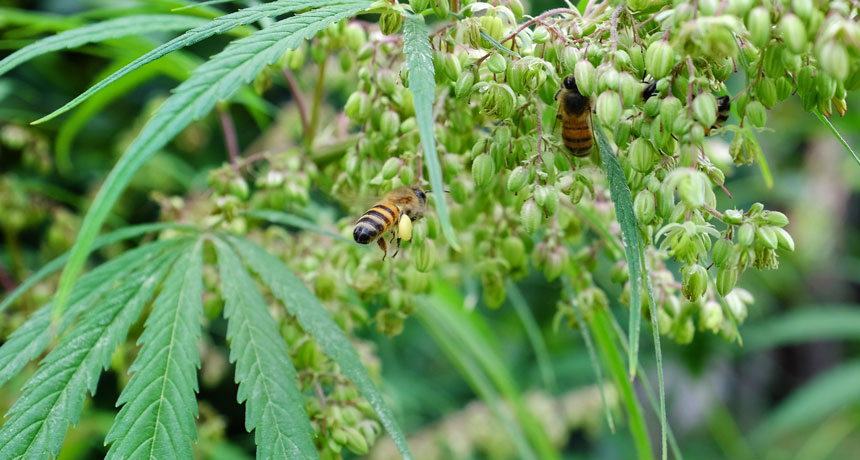
FEED THE BEES Cannabis depends on wind for pollination, but it turns out bees are raiding male flowers (shown) in hemp fields to forage for pollen for babyfood.
ruvanboshoff/iStock.com

FEED THE BEES Cannabis depends on wind for pollination, but it turns out bees are raiding male flowers (shown) in hemp fields to forage for pollen for babyfood.
ruvanboshoff/iStock.com